Today’s Current Affairs: 14th February 2023 for UPSC IAS exams, State PSC exams, SSC CGL, State SSC, RRB, Railways, Banking Exam & IBPS, etc
Table of Contents
New Governors Appointed:
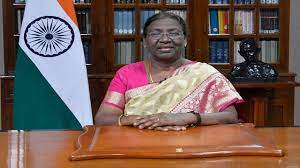
President Murmu recently appointed six new governors and reshuffled seven others.
- Lt. General Kaiwalya Trivikram Parnaik is now the governor of Arunachal Pradesh.
- Lakshman Prasad Acharya has taken over as governor of Sikkim.
- C.P. Radhakrishnan has become the governor of Jharkhand.
- Shiv Pratap Shukla is the new governor of Himachal Pradesh.
- Gulab Chand Kataria has been appointed as governor of Assam.
- Justice (Retd.) S. Abdul Nazeer will take charge as governor of Andhra Pradesh.
- Biswa Bhusan Harichandan, the governor of Andhra Pradesh has been appointed as governor of Chhattisgarh.
- Sushri Anusuiya Uikye, currently governor of Chhattisgarh will take over as governor of Manipur.
- La. Ganesan, governor of Manipur will now be the governor of Nagaland
- Phagu Chauhan, governor of Bihar is now the governor of Meghalaya
- Rajendra Vishwanath Arlekar, governor of Himachal Pradesh will take over as governor of Bihar.
- Ramesh Bais, governor of Jharkhand has been appointed as governor of Maharashtra.
- Brig. (Dr.) Shri B.D. Mishra (Retd.), governor of Arunachal Pradesh has now been appointed as Lt. governor of Ladakh.
Financial Literacy Week 2023:
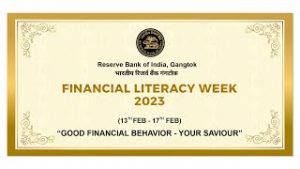
Financial Literacy Week is celebrated between February 13 and February 17.
- The celebrations are organized by the Reserve Bank of India.
- RBI will conduct a mass media campaign to spread financial awareness during the week.
- The week is celebrated by the central bank since 2016.
- The main objective of the week is financial education.
- Theme of Financial Literacy Week 2023 : Good Financial Behaviour – Your Saviour
- The plan aims to build a financially resilient India.
- Also, it will create financial awareness among the public.
- This week’s celebrations are based on this plan.
National Women’s Day 2023:
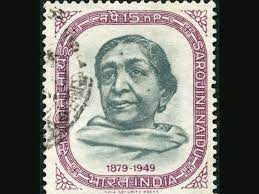
India celebrates National women’s day to honour the achievements of women in the country, especially in the field of politics, culture, and economy.
- Each year on February 13, India commemorates Sarojini Naidu’s birth as National Women’s Day, which is observed across the country.
- She was born on the 13th of February, 1879.
- Because of her poetry, she was given the moniker “Nightingale of India” or “Bharat Kokila” and became well-known.
- She has produced a number of poems on many subjects, including romance, patriotism, and tragedy.
- Sarojini Naidu is well-known across the globe for her contributions to literature.
- The National Women’s Day of February 13 is celebrated in remembrance of Sarojini Naidu’s achievements.
- Sarojini Naidu’s birth anniversary is celebrated this year on her 142nd birthday.
International Epilepsy Day 2023:

To increase awareness of the disease and to identify the symptoms at early stages, International Epilepsy Day is celebrated.
- It is celebrated on the second Monday of February every year.
- Theme of International Epilepsy Day 2023 : The celebrations are to focus on “STIGMA”. Stigma means fear or feeling negative reaction.
- The day is celebrated by the WHO of the UN and several other countries.
- The members of UN spread the awareness of the disease on this day.
- Epilepsy is a nervous disorder.
- It affects brain activity.
- The disease is identified late among children.
- Early symptoms of the disease are left unnoticed.
- If identified at early stages, it can be cured easily.
World Radio Day 2023:

The United Nations and other countries are celebrating the 12th edition of World Radio Day
- It is celebrated on February 13.
- The celebrations of World Radio Day are launched by UNESCO on behalf of the UN.
- The day aims to highlight the fact that radios are the pillars of conflict prevention and play a major role in maintaining peace in the world.
- Theme of World Radio Day : Radio and Peace
- The day is celebrated to highlight the role played by radio and other broadcasting media.
- The day emphasizes the impact of news broadcasted by the radio on the public.
First Edition Of “Upnext India 2023”:

Inaugurated the first edition of “Upnext India 2023” (Reverse Buyer Seller) meet
- It is organized by AEPC and supported by the Ministry of Commerce and Industry under the Market Access Initiative (MAI) Scheme
- MAI is an Export Promotion Scheme. The scheme aims to act as a catalyst to promote India’s exports on a sustained basis.
- The scheme is formulated on the basis of the product and country focus approach.
- It will evolve specific markets and specific products through market studies/surveys.
- Reverse Buyer Seller Meet is to provide an opportunity for prospective importers (Buyers) to interact with their Indian counterparts (sellers) about the requirements, instead of sellers going to buyers to sell their products.
- Apparel Export Promotion Council (AEPC) : Incorporated in 1978, AEPC is the official body of apparel exporters in India that provides assistance to Indian exporters as well as importers/international buyers who choose India as their preferred sourcing destination for garments.
Ramping Up Border Infrastructure:
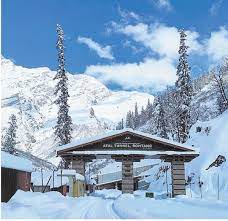
According to India’s External Affairs Minister, the government’s recent border infrastructure projects focus on the north and east along India’s 3,488 km border with China (or LAC).
- Reports claim that Indian forces have lost access to 26 of 65 patrolling points along the LAC since 2020.
- The timing is crucial because of the upcoming meetings of the G-20 Foreign Ministers and the Foreign Ministers of the SCO
- Ramping up infrastructure in Ladakh, HP, UK, Sikkim and Arunachal Pradesh.
- Many of these projects which have been in the pipeline for several decades have been expedited.
- For example, the length of roads constructed in the China border areas (6,806 km between 2014 to 2022) is almost double the length constructed from 2008-2014.
- Projects connecting India to “friendly” neighbouring states such as Bangladesh, Bhutan, Nepal and Myanmar.
- Improving cross-border connectivity via highways, bridges, inland waterways, railroads, electricity lines and fuel pipelines.
- Modernising and constructing integrated check posts (ICPs) at all the border crossings to smooth trade.
- Funding and constructing infrastructure projects. For example,
- The Mahakali motorable bridge and the Maitri Setu between Tripura and Bangladesh,
- The Kaladan Multi-Modal Transit Transport Project (KMTTP),
- The Sittwe port project and the road to Mizoram, etc.
Maharishi Dayanand Saraswati Jayanti:
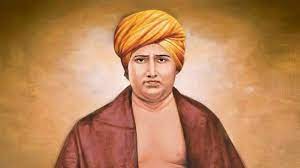
The Prime Minister of India inaugurated the year-long (two-year) celebrations commemorating the 200th birth anniversary of Maharishi Dayanand Saraswati. He also released a logo for commemoration.
- Maharishi Dayanand Saraswati Jayanti is celebrated every year to mark the birth anniversary of the Maharishi Dayanand Saraswati.
- He was born on 12th February 1824 in Tankara, Gujarat in a Brahmin family.
- His views were published in his famous work, Satyarth Prakash (The True Exposition).
- He was an Indian philosopher, social leader and founder of the Arya Samaj.
- His vision of India included a classless and casteless society. He took inspiration from the Vedas and considered them to be ‘India’s Rock of Ages’.
- He also gave the slogan “Back to the Vedas”.
- The DAV (Dayanand Anglo Vedic) schools came into existence in 1886 to realize the vision of Swami Dayanand Saraswati.
Mass Drug Administration (MDA) Campaign : Aimed At Ending Filariasis Disease
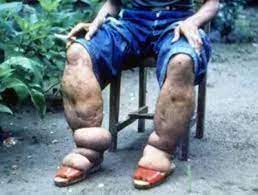
The Ministry of Health and Family Welfare has launched a nationwide Mass Drug Administration (MDA) campaign aimed at ending filariasis disease.
- India aims to eliminate filariasis by 2027, three years ahead of the global target.
- High-burdened areas are Bihar, Chhattisgarh, Jharkhand, Maharashtra, Uttar Pradesh, West Bengal, Karnataka, Odisha, Madhya Pradesh and Andhra Pradesh.
- Filariasis is a parasitic infection caused by microscopic, thread-like worms known as filariae.
- It is spread by the bite of infected mosquitoes, and it affects millions of people in tropical and subtropical regions worldwide.
- Lymphatic filariasis is caused by infection with parasites classified as nematodes (roundworms) of the family Filariodidea.
- There are 3 types of these thread-like filarial worms:
- Wuchereria bancrofti, which is responsible for 90% of the cases,
- Brugia malayi, which causes most of the remainder of the cases,
- Brugia timori, which also causes the disease.
- Lymphatic filariasis infection involves asymptomatic, acute, and chronic conditions.
- In chronic conditions, it leads to lymphoedema (tissue swelling) or elephantiasis (skin/tissue thickening) of limbs and hydrocele (scrotal swelling).
11th Meeting Of The India-Mongolia Joint Working Group:
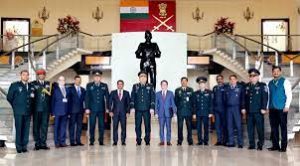
The 11th meeting of the India-Mongolia Joint Working Group was held in India.
- While acknowledging the growing ties between both the countries, they expressed satisfaction at the ongoing defense cooperation despite the limitations imposed by Covid-19 pandemic.
- India and Mongolia have interacted through Buddhism throughout history.
- Mongolia regards India as its “third” neighbor along with US, Japan, and Germany and a “spiritual neighbour”.
- India established diplomatic relations with Mongolia in 1955 and it was the first country outside the Soviet bloc to open diplomatic relations with Mongolia.
- The Indian Resident Mission in Ulaanbaatar was opened in 1971.
- This relationship was upgraded to “strategic partnership” in 2015 when the Indian Prime Minister visited Mongolia and declared it as an essential component of ‘Act East Policy’
- Mongolia has publicly reiterated its support for India’s membership to the permanent seat of the expanded United Nations Security Council (UNSC).
- India has played an important role in getting Mongolia membership to key international forums, including the United Nations (UN), despite strong opposition from China and Taiwan.
- India also championed the inclusion of Mongolia in the Non-Aligned Movement.
- In a reciprocal gesture, Mongolia co-sponsored a 1972 UN resolution with India and Bhutan for the recognition of the newly liberated Bangladesh.
- In 2022, an India-built oil refinery at the cost of more than USD 1 billion and with a capacity of 1.5 million metric tonnes was opened near Sainshand in southern Dornogovi province of Mongolia.
- This refinery will take care of 75 % of Mongolia’s oil refining needs
- India – Mongolia bilateral trade was USD 35.3 million in 2020, down from USD 38.3 million in 2019.
- The India-Mongolian Agreement on Cultural Cooperation, signed in 1961, has governed the Cultural Exchange Programme (CEP) between the two countries.
- The Agreement envisages co-operation in the fields of education by way of scholarships, exchange of experts, participation in conferences, etc.
- Joint defence exercises code-named Nomadic Elephant.
- India is also an active participant in an annual week-long joint training exercise called the Khaan Quest, hosted by Mongolia.
- Cooperation over Environmental Issues: Part of the Bishkek Declaration (snow leopard).
Bird Survey In Tansa Wildlife Sanctuary:

The first-ever bird survey in Tansa Wildlife Sanctuary was conducted recently, and the volunteers recorded 186 species of birds.
- Tansa Wildlife Sanctuary located in the Thane District of Maharashtra, 90 km northeast of Mumbai in the foothills of the Western Ghats.
- It is known to be a paradise for birdwatchers.
- It has two rivers, the Tansa and Vaitarna, and the sanctuary gets its name from the former, which divides the sanctuary into two parts.
- The sanctuary forms the catchment area of Tansa lake, along with the surrounding forests of Khardi, Vaitarna, Wada, and Shahapur ranges.
- Tansa reservoir, along with Vaitarna and Bhatsa reservoirs, is the major source of water for the cities of Mumbai and Thane.
- Within Tansa Sanctuary is a fort at Mahuli, situated on a 762 m high hilltop.
- The Sanctuary has Southern Tropical Moist Deciduous Forest, with a few patches of Evergreen forest.
- Flora: It consists of trees like Kalamb, Bibla, Khair, Hed, Teak, and Bamboo.
- Fauna: At least 54 species of animals and 200 species of birds exist in the sanctuary.
- Major wild animals are Panther, Barking deer, Mouse deer, Hyena, Wild boar,.
India’s First Frozen Lake Marathon : Ladakh

India’s first frozen lake marathon is set to be held in Ladakh’s Pangong Tso.
- Pangong Lake or Pangong Tso is a long narrow, endorheic (landlocked) lake situated at a height of more than 14,000 ft (4,350 meters) in the Ladakh Himalayas.
- The lake is 5 kilometers wide and 134 kilometers long, with one-third of it lying in India & the other two-thirds in China.
- It is the world’s highest saltwater lake.
- The lake is also very deep and reaches a maximum depth of almost 328 feet.
- It is also known to change colors, appearing blue, green, and red at different times
INDIAai Initiative : Expansion
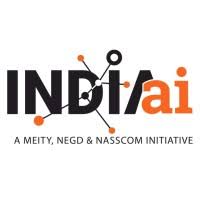
Against the backdrop of the revolutionary transition in AI brought in by ChatGPT, the government is expanding the INDIAai initiative in partnership with Indian tech companies, startups, and academic institutions
- INDIAai initiative is the National artificial intelligence Portal of India which was launched on 28th May 2020.
- It is a joint initiative by the Ministry of Electronics and IT (MeitY), National e-Governance Division (NeGD) and NASSCOM.
- In 2009, NeGD was created as an Independent Business Division under the Digital India Corporation (a not-for-profit company set up by MeitY).
- NASSCOM is a not-for-profit industry association and the apex body for the IT and IT-enabled products and services sector in India.
- It is the single central knowledge hub on artificial intelligence and allied fields for aspiring entrepreneurs, students, professionals, academics, and everyone else.
Artificial intelligence (AI):
- It is a wide-ranging branch of computer science concerned with building smart machines capable of performing tasks that typically require human intelligence.
Bird Survey At Nagarahole Tiger Reserve:
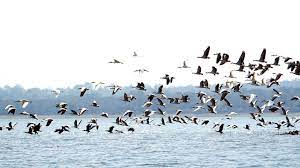
The recent bird survey conducted at Nagarahole Tiger Reserve has resulted in the recording of 290 bird species, including a few migratory ones.
- Nagarahole Tiger Reserve is an important Tiger Reserve in Karnataka and is a major hub of conservation under Project Tiger and Project Elephant.
- Nagarahole Tiger Reserve previously known as Rajiv Gandhi National Park was named after the river Nagarahole.
- This tiger reserve forms a critical connecting habitat for tigers and elephants to other areas of the Western Ghats through the Brahmagiri wildlife sanctuary and to the Eastern Ghats through the Bandipur Tiger reserve.
- Flora: It consists mainly of moist deciduous forests with predominating trees of teak and rosewood.
- Fauna: Tiger, Leopard Asiatic, Wild Dog, Sloth Bear, Asiatic Elephant, Gaur, Sambar Chital Muntjac, Four Horned Antelope etc.
Cholera Crisis : African Continent

According to the World Health Organization, the African continent is likely to see its worst cholera crisis this decade, driven by extreme weather events and poor water supply and sanitation infrastructure.
- Cholera disease is a life-threatening infectious disease and a public health hazard.
- It is an acute, diarrheal illness caused by infection of the intestine with the bacterium Vibrio cholera.
- Symptoms: Profuse watery diarrhoea, Vomiting, Leg cramps etc
- It is transmitted to humans through water or food which is contaminated with the cholera bacterium.
- The disease can spread rapidly in areas with inadequate treatment of sewage and drinking water.
- Currently, there are three WHO pre-qualified oral cholera vaccines (OCV), Dukoral, Shanchol, and Euvichol-Plus.
- All three vaccines require two doses for full protection.




